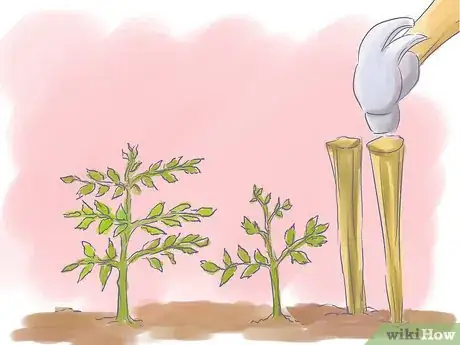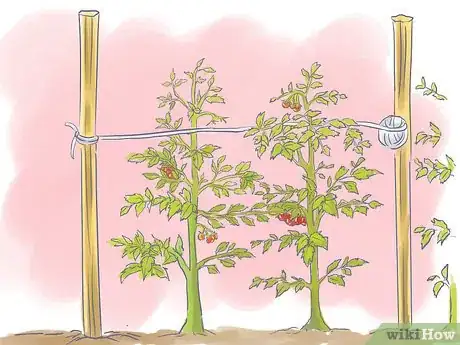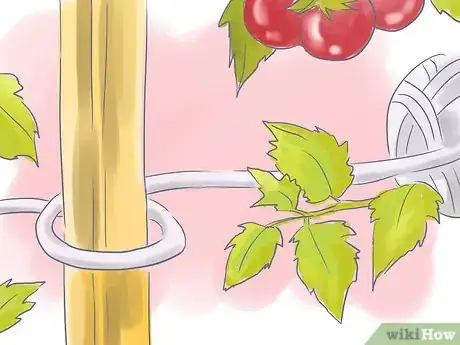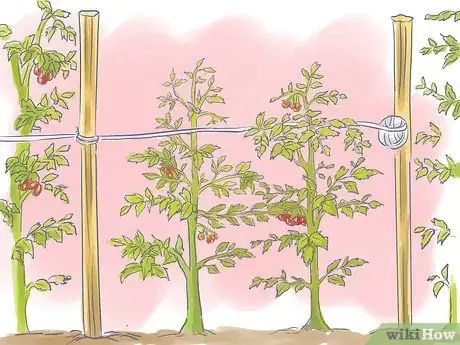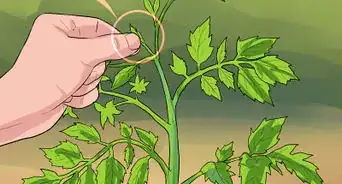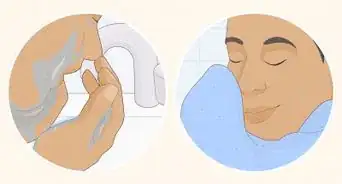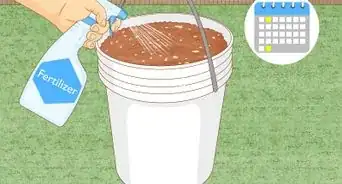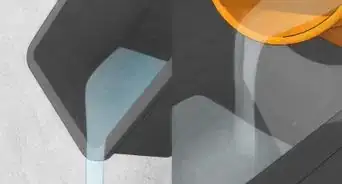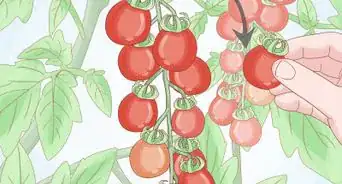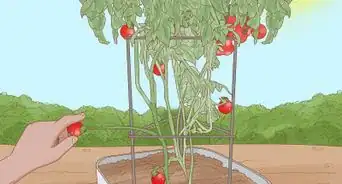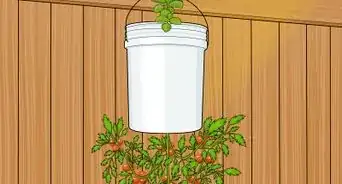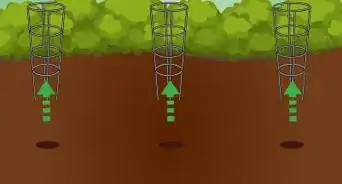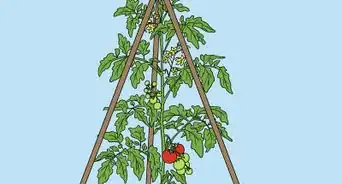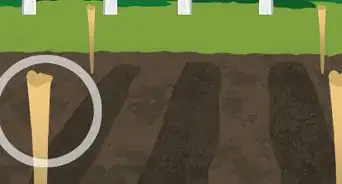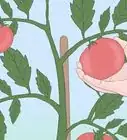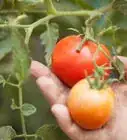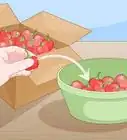wikiHow is a “wiki,” similar to Wikipedia, which means that many of our articles are co-written by multiple authors. To create this article, 12 people, some anonymous, worked to edit and improve it over time.
wikiHow marks an article as reader-approved once it receives enough positive feedback. In this case, 97% of readers who voted found the article helpful, earning it our reader-approved status.
This article has been viewed 68,198 times.
Learn more...
Explanation: As your tomato plants grow, their weak stems will tend to fall over and sit in the dirt. This can make your plants susceptible to disease and rot, and will increase your chances of stepping on them. Most farmers tie their plants to stakes to increase plant height, increase plant yield, and to keep their rows clear for people or machinery.
Steps
-
1Carefully hammer your stakes into the ground, with two plants between each stake. The stakes should be as straight and vertical as possible, and should be in line with the plants. Make sure the stakes are at least 6” in the ground. The stakes should not wiggle.
-
2Hammer two stakes together at the ends of the rows for extra reinforcement.Advertisement
-
3Tie the end of the string to the stake at the end of the row about 8” off the ground.
-
4Carefully bring the string in front of the first plant next to the stake, then behind the second plant.
-
5Pull the string tight and loop it around the next stake once.
-
6Proceed to the next set of plants, repeating steps 4 and 5, keeping the string parallel to the ground.
- Note that when you have reached the end of the row, loop the string around the end stake twice, and work your way back down the other side of the plants, putting the string on the side of the plant that doesn’t already have a string. The two strings should cross half-way between each pair of stakes. Don’t pull this side too tight, or you’ll break the plants.
-
7Return to the starting end, tie off and then cut your twine. You are now ready for your next row(s).
Community Q&A
-
QuestionWhat about as the plants grow?
 Community AnswerEarlier in the growing season a "cutting" is taken, this gives it a better chance to continue life. April and May are the best months to take snips of summer flowering plants.
Community AnswerEarlier in the growing season a "cutting" is taken, this gives it a better chance to continue life. April and May are the best months to take snips of summer flowering plants.
Warnings
- Tomato plants are fragile and will snap if you do not handle them gently.⧼thumbs_response⧽
Things You'll Need
- Wooden stakes – enough for a stake after every two plants, plus a few extras for reinforcement or in case one breaks. They should be about four feet if the plants are determinate, and up to seven feet if the plants are non-determinate.
- A sledgehammer or stake-pounder.
- Twine. The USDA uses nylon twine because it is cheaper and doesn’t snag the stems, but my uncle always used baler twine because it is biodegradable, non-petrochemical, and won’t cut into your fingers.
- Scissors.

